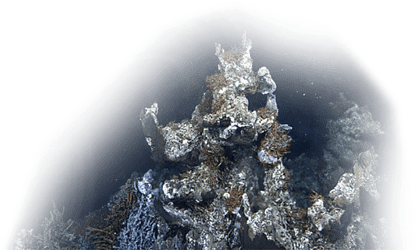A massive 8.8-magnitude earthquake struck off the coast of Russia on Tuesday, July 2 2025, prompting tsunami advisories across the Pacific, including for British Columbia. Within moments, Ocean Networks Canada’s (ONC) real-time seismic sensors detected the quake, and preparations began to monitor potential wave activity heading toward the coast.
By 11:00 p.m. PST, nearly seven hours later, ONC’s highly sensitive bottom pressure recorders, capable of detecting changes in water height smaller than a millimetre, picked up the first small tsunami wave offshore of Vancouver Island.
These measurements allowed researchers to track the wave’s speed and direction as it crossed the continental shelf toward the B.C. coastline.
Bottom pressure recorder sensors, part of ONC’s NEPTUNE cabled observatory, calculated the height of small tsunami waves off the coast of British Columbia following a massive earthquake near Russia.
“Our sensors give us a clear picture of what's happening offshore, and that information supports both scientific research and real-time emergency decision-making,” says Kate Moran, ONC’s president and CEO.
While ONC does not provide public alerts, our sensor data, including coastal radar, flows directly to the U.S. National Tsunami Warning Center, which coordinates with Canadian emergency management agencies to issue notifications.
Tsunami waves are visible in the plotted data from ONC sensors located up to 300 km offshore of Vancouver Island, available on Oceans 3.0.
ONC’s infrastructure also supports long-term tsunami modelling and community resilience planning by providing open-access data to scientists, governments, and the public.
“We operate over 12,000 ocean sensors, including some of the most precise pressure instruments in the world,”says Moran. “The technology is powerful, but people need to be ready. For distant events, there’s time to react. For earthquakes close to shore, there may be less than a minute. Public awareness and preparedness are critical.”
ONC’s team continues to work with regional and national partners to advance tsunami science and improve detection technology, including radar systems to detect nearshore waves in real time.
To explore the data behind this event and learn more about how ONC supports safer coastal communities, visit our open-access data portal: https://data.oceannetworks.ca/
